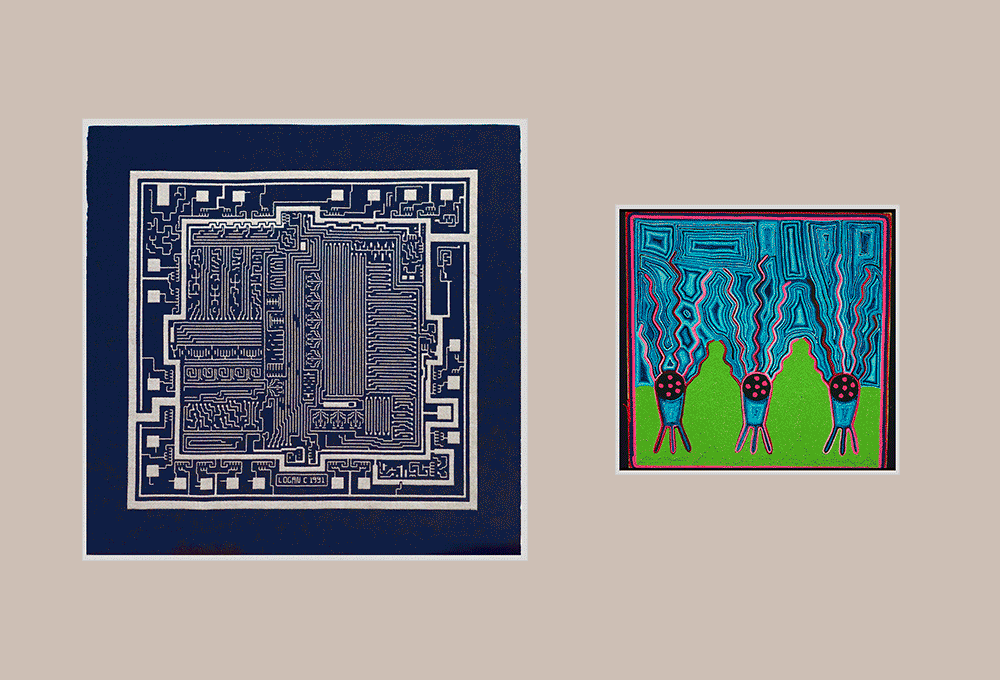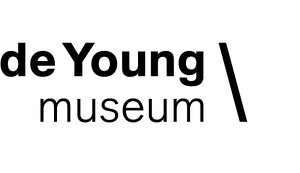August 15, 2018–April 30, 2019
50 Hagiwara Tea Garden Dr
San Francisco, CA 94118
United States
Hours: Tuesday–Sunday 9:30am–5:15pm
Corporate mottos, like metonyms, are a function of partial stand-ins for the mission of a whole: From HP’s “Invent” to Apple’s “Think different” (in answer to IBM’s “Think”), from Google’s “Don’t be evil” to Facebook’s “Move Fast and Break Things” to Palantir’s “Save the Shire” and Neuralink’s “Decompress”; the mottos of these companies encapsulate identities that their consumers desiringly buy into.
Long before these mission-driven corporations drilled and mined our relationship with information, images, and networks, what is now known as the Bay Area was controlled by the Franciscan emissaries of the Spanish Crown imposing and enforcing their mission onto the indigenous populations who had occupied the territory for over 5,000 years: the Ohlone, once declared extinct but in actuality not so and today very much fighting for recognition and preservation of their heritage. One is a song, a fragment of which has recently been “rediscovered” and quickly appropriated as a popular motto for San Franciscans: “We dance on the brink of the world.” Maybe it’s a fragment of poetic justice for this lyric to strike at the center of a tech culture intent on entrapping our instant gratification monkey while rushing for seismic specters.
Specters of Disruption is the result of an over year-long inquiry into the encyclopedic collections of the Fine Arts Museums of San Francisco encompassing over 130,000 works of art and cultural artifacts. Performed across the holdings of six curatorial departments split between two museums, this process of discovery yielded a story about an institution shaped by and representative of the particularities of its origin, history, and geography: countless representations of cliffs, abysses, and cascades; extensive memorabilia and objects dedicated to the gold rush and reverberations of frontierism; large corpus of photographic documentation of the 1906 earthquake destruction; myriad of origin myths where an archaic form of tech is equated with the beginnings of a civilization; insistent echoes of counter cultures and their countless appropriations.
The emergence of these patterns within the museums’ collections gradually shaped a narrative that locates the origins of disruption as a foggy business signifier that has become synonymous with Silicon Valley, deep within the natural, topographical, cultural, and mythological fabric of the Bay Area. Drawing on this “institutional unconscious” and re-contextualizing the museums historic holdings with new contemporary acquisitions like Carrie Mae Weems Lincoln, Lonnie and Me, Specters of Disruption interplays the museums’ colonial and geological underpinnings to the current conditions of the Bay Area and the evolving trajectories of American art histories.
Specters of Disruption includes ninety-eight works by Vito Acconci, Terry Adkins, Olga de Amaral, El Anatsui, Ruth Asawa, Albert Bierstadt, Emil James Bisttram, James Budde, Nick Cave, Carl Cheng, Bernard Childs, Frederic Edwin Church, Thomas Cole, Bruce Conner, Abraham Cruzvillegas, Joe Cunningham, George E. Curtis, Jay DeFeo, Tony Feher, Thornton Dial, Richard Diebenkorn, Arthur Dove, Millard Donald Everingham, Arnold Genthe, Al Farrow, W. Logan Fry, Edward Hagedorn, Hilaire Hiler, Hills (Rudolph Schaeffer School of Design), Diane Itter, Jospeh Lauber, Tom Marioni, Joe Minter, Richard Misrach, Ramon Medina Silva, Lee Mullican, Louise Nevelson, Bill Owens, David Park, Jessie T. Pettway, Plummer T. Pettway, Matthew Picton, Mel Ramos, Robert Rauschenberg, Ed Ruscha, Doris Salcedo, Wilfried Sätty, Alan Sonfist, Frank Stella, Henry Steinegger, Pat Steir, Jessica Stockholder, Johnny Warangkula Tjupurrula, Wayne Thiebaud, Carrie Mae Weems, M. Woolf, unnamed artists from the Peiute, Huichol, Navajo tribes, and unauthored prints from publishers Britton & Rey Publisher, Justh, Quirot & Co., Time, and V. Prevost.
Specters of Disruption is organized by Claudia Schmuckli, Curator in Charge of Contemporary Art of the Fine Arts Museum of San Francisco.
The Contemporary Art Program at the de Young and Legion of Honor is made possible by the Contemporary Support Council of the Fine Arts Museums of San Francisco.
Visit de Young for more information.
About the Fine Arts Museums of San Francisco
The Fine Arts Museums of San Francisco oversee the de Young, located in Golden Gate Park, and the Legion of Honor in Lincoln Park. It is the largest public arts institution in San Francisco, and one of the most visited arts institutions in the United States. Reflecting a conversation among cultures, perspectives, and time periods, the collections at the de Young include American painting, sculpture, and decorative arts; art from Africa, Oceania, and the Americas; costume and textile arts; and modern and contemporary art.
Media contacts
Helena Nordstrom, International Communications Manager, hnordstrom@famsf.org / T 415 750 7608
Miriam Newcomer, Director of Communications, mnewcomer@famsf.org / T 415 750 3554


